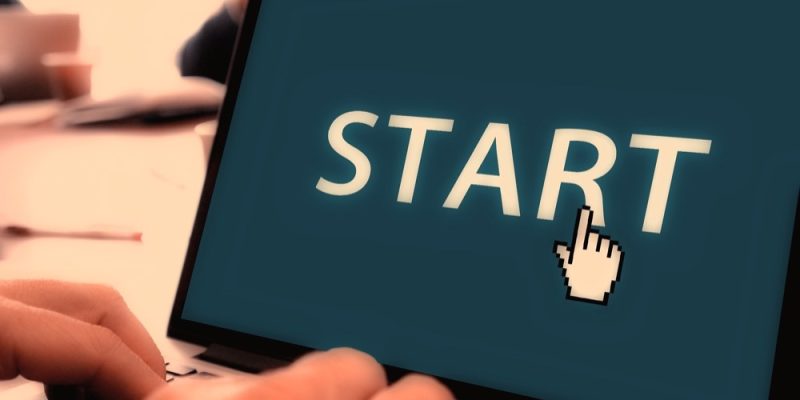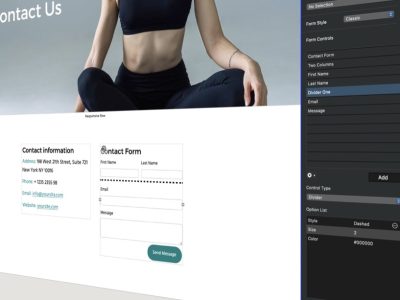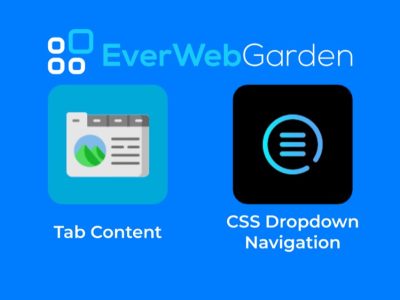Creating your first website in EverWeb is an exciting moment! It’s probably a time where you want to let loose and be creative and get your site up and running as quickly as possible. Before you start going full bore in to building your site, take a few minutes to get things set up properly. Setting up some defaults before you start building your site will save you massive amounts of time down the road and will give your site the consistent look and feel that it should have throughout all its pages.
So, you’ve launched EverWeb for the first time and hit the ‘Create new website’ button. What next? Find out below with our handy list of tips to make building your website quick and easy to do!
- Log In To Your EverWeb Account: When you purchase EverWeb you will also create an Client account for yourself. When you launch EverWeb for the first time check to make sure that your account details are set up in the EverWeb-> Preferences-> General menu option for Mac users, and in the Edit-> Option-> General menu option for Windows users. Enter your account details if they have not already been entered. Check the ‘Save Password’ box so that you don’t need to login to EverWeb every time you launch EverWeb. If you are not logged in to EverWeb, you will not be able to publish your website to the Internet and you may have problems accessing EverWeb Addons as well.
- Give Your Site a Name: Whenever you begin a new website project in EverWeb, by default the Project will be called ‘New Website’. You can simply change this to the name that you want to call your Project by using the File-> Rename Website menu option or just double click on the ‘NEW WEBSITE’ name in the Web Page List, then rename the Project. Press Enter when finished.
- Using EverWeb’s Theme Templates: When you create a new website in EverWeb, or want to add a new page, you will see this screen. If this is the first website that you’re building in EverWeb, take a look at the Theme Templates listed down the left hand column of the dialog box. It’s important to note at this stage that you can create two different styles of website: Fixed Width or Responsive. Conceptually, it’s easier to build a fixed width website if you’re not technically minded. Creating a fixed width site means that you will need to create pages for both desktop and mobile devices. If you create a responsive website, you only need one page as this page scales dynamically to fit the device it’s being displayed upon. Whilst it’s great to only have to design one page for all device types, it’s a bit more challenging technically to do so.
When you see the Theme Template Chooser, you can filter the list of themes according to whether you want to see all themes, responsive only themes, fixed width themes or newly added themes. Use the dropdown menu in the top left hand corner of the dialog box to show only the theme types that you want displayed.
Use the Theme Template Chooser to select a ready made theme, or to choose a blank theme. Using a ready made theme will save you a lot of time and all Theme Templates are fully customizable. If you don’t want to use a ready made Theme Template, just choose the Blank or Blank Responsive theme to create your own theme.
- Select Your Default Styles: Before you begin to create the content of your pages, take a moment to set up your Project’s Default Styles. You can find this option on the Format menu. Selecting the styles for your Project at the beginning will save you a lot of time and effort later on as items such as default text font and size are already set up. The other important option is the setting up of your site’s Hyperlink colors for normal, mouse over and visited states. Once you have chosen the options that suit your site’s design, click on ‘Save’. Anything you create from now on will adopt the styles you have chosen. If you’ve already added content that uses a style you have changed, you’ll have to manually update the content to match your new style.
- Create a 404 Page Not Found: It’s something that’s familiar to anyone who has ever used the Internet – the ‘404 Page Not Found’ screen. This page usually appears when you click on a broken link or try to access a page that’s no longer available e.g. the page has been moved to a different location and its links have not been updated, or the page has been deleted. When a visitor to your site meets a 404 page not found screen, there’s a possibility that they may leave your site altogether. To help avoid this happening, you can create your own 404 Page not found page in EverWeb and craft it to help direct your visitor on how to proceed next. For example, you could include a button to your site’s Home page.
To set up a 404 Page Not Found Page in your site:
- Create a new page using the ‘Add Page’ button in the Toolbar
- Name the page as something meaningful such as ‘404 Page Not Found’. Make sure that the page is not included in your Navigation Menu.
- Design the page so the call to action from your visitor will keep them in your site. For more information on designing your 404 Page Not Found page, click on the link.
- Once you have finished your design, go to the EverWeb-> Edit Publishing Settings menu option.
- Scroll down the page until you reach the ‘Advanced Options’ section. Click on the dropdown menu next to the ‘Not Found Page’ option then choose the 404 Page not found page you created earlier.
- Publish your site to finish.
- Create a Master Page for Your Site: One of the great features about EverWeb is that it allows you to create your own boiler templates that can be used as framing for some, or all, of the pages in your site. A Master Page is exactly this. It allows you to add content to the page that will appear on every page that it’s attached to, so a great place to add your company logo, your navigation menu, copyright info and so on. You can also add your own color scheme and styling to a Master Page. If ever you need to change your website’s style, you only have to change one page. Master pages are a great time saver and give your website a consistent look and feel too. Follow the link on Master Pages to find out more.
- Check Out Your Site Publishing Settings: Whether you host your site with an EverWeb + Hosting plan or you host with your own provider, make sure to check out your Site Publishing Settings whilst you are creating your website. In this way you can test publish your site to the Internet to make sure that you don’t have issues when you finally publish your completed site. If you have an EverWeb + Hosting account just make sure that the ‘Publish To’ dropdown menu is set to ‘EverWeb’ and that the Accounts and Domains fields are correct for the Project that you are working on. If you have your own hosting provider, the ‘Publish To’ dropdown menu should be set to ‘FTP’. Complete the details under the ‘FTP Server Details’ section. If necessary, consult with your hosting provider to ensure the details you enter are correct. You can also use the ‘Test Connection’ button to test the connection to your Host’s server. If you have problems when publishing, you can also liaise with EverWeb Support in addition to your own hosting provider.
Setting up your project before starting to add content may take a little time, but in the end doing so will save you a lot of time, effort and frustration later on.
If you have any questions about this post, please let us know in the Comments Section below.










Comments